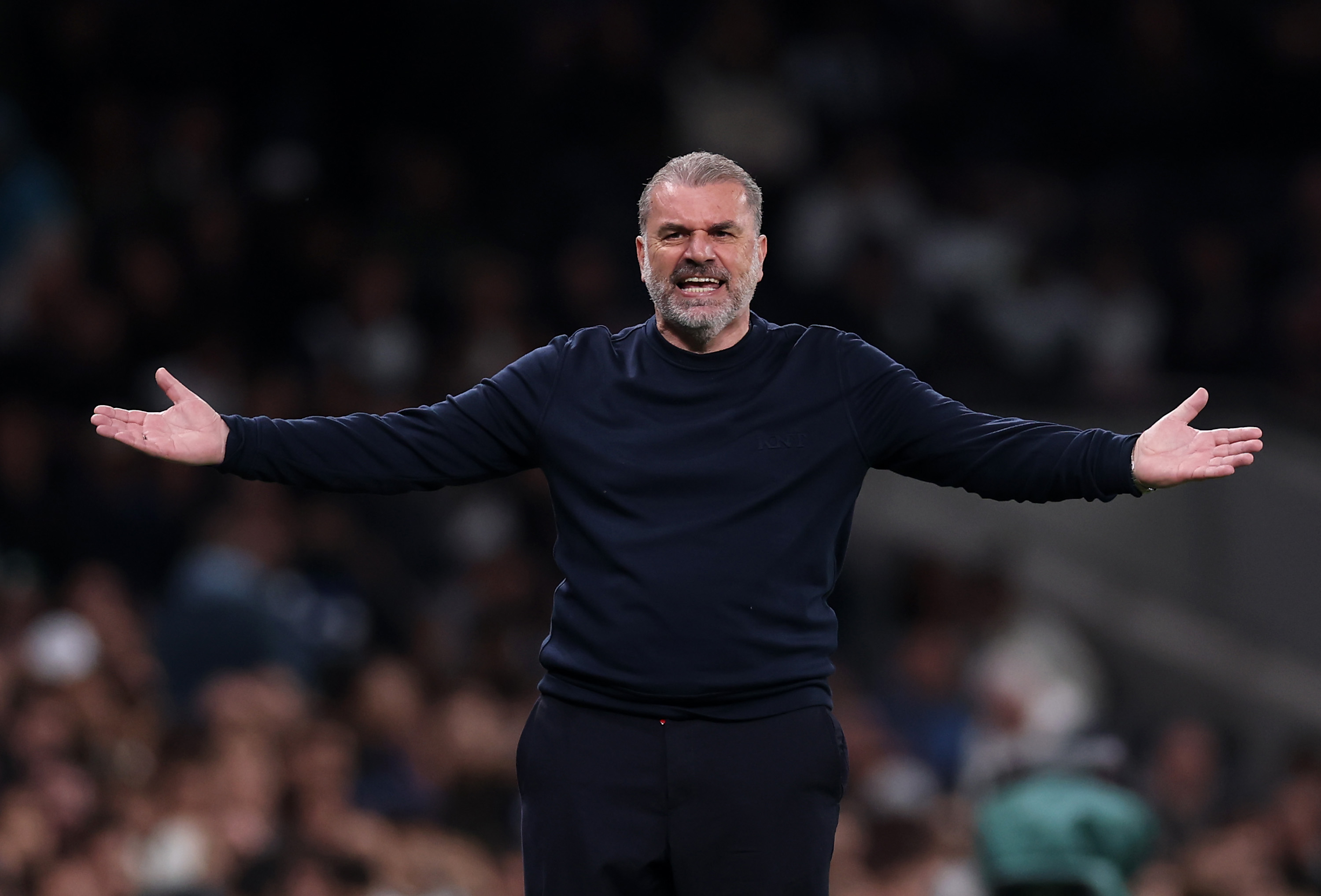How 'Swiss army knife' Costa became a man for all occasions
Jose Mourinho held off fixing his striker crisis last season with the Brazil-born striker in mind. Thore Haugstad explains why...
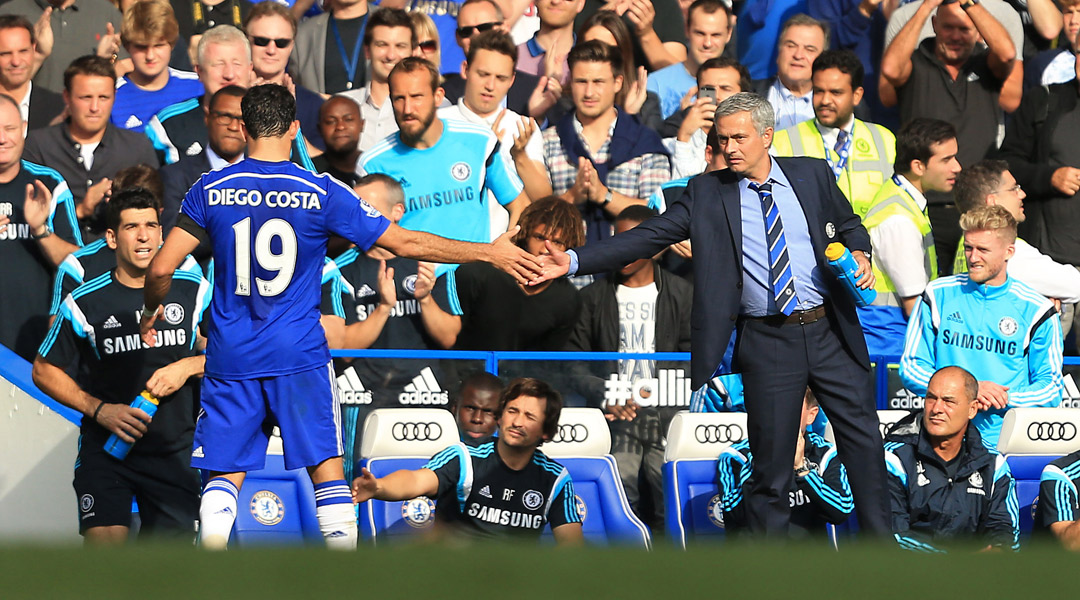
In November last year, José Mourinho said something that surprised many. Chelsea would not buy a striker in the January transfer window. This seemed odd. They clearly lacked sharpness up front. Neither of Fernando Torres, Samuel Eto’o nor Demba Ba had convinced. Funds were even available. But Mourinho decided to wait. The Portuguese already knew which player might become available in the summer.
Since arriving from Atlético Madrid for £32 million, Diego Costa has scored seven goals in four league matches. Or about one goal every 47th league minute. And yet his overall value transcends such statistics. The Brazil-born powerhouse is the complete package; a one-man attack capable of playing almost any role demanded of him. Present are physique, mobility and that intangible predatory instinct. If Ba was supposed to be the aerial threat, Torres the runner and Eto’o the poacher, Costa does all three.
Mourinho loves such forwards. Because of their near-complete skillset, they can conjure up solutions in any circumstance. The late-20s Didier Drogba was a fine example and Costa is another. He is the sneaky finisher that secures those supposed routine wins at home on Saturday afternoons, like against Swansea. He is the battle-hardened warrior who spearheads the troop on tough away days, such as against Everton. Costa is a Swiss army knife: a tool capable of breaking through any defence.
Cool customer
He's a sharp one, too; hardly a chance has gone amiss. His 7 goals have been scored from just 14 attempts. The two most recent matches have proved particularly productive, with 5 goals from 9 efforts.
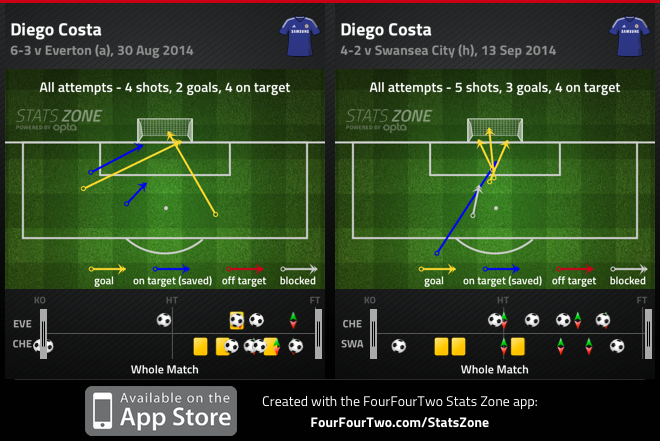
Encouraging for Chelsea is the variety of the goals. In the wild-west 6-3 win away to Everton, his finishes were end products of intelligent movement in behind or around the back-line. He outsmarted the offside trap for his first two shots, snuck in behind a defender for his third and used the fourth to bag his brace after an overlap, with the Everton defence off guard. Two weeks later, at home to Swansea, he produced a Ruud van Nistelrooy-style hat-trick that included a header from a corner. His first goal at Goodison Park and his second versus the Welsh side demonstrated the depth of his repertoire.
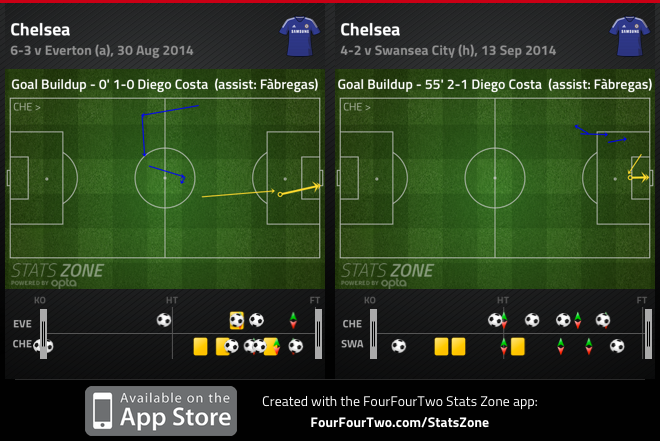
Home and away
Get FourFourTwo Newsletter
The best features, fun and footballing quizzes, straight to your inbox every week.
But one need not analyse his goals to appreciate the various sides of Costa’s game. They are evident in Chelsea’s build-up play. He provides an efficient reference point regardless of the team’s approach. If they go direct, say, in a close-fought away match, he will hunt long balls down the channels like a dog chasing a stick. At Goodison Park he often drifted wide to collect long passes, then turned to challenge a defender or find a central midfielder. This could initiate dangerous moves. Two of Chelsea’s goals were assisted by Ramires, and on both occasions the Brazilian had received a square ball from Costa.
With Everton the only big game Costa has played for Chelsea, a comparison can be made with last season’s Madrid derby at the Bernabéu. Costa delivered a masterclass in working the channels, chasing everything and tormenting defenders. (His spats with Pepe and Sergio Ramos were a spectacle in their own right.) He scored as Atlético won 1-0. Both against Madrid and Everton, his role in the build-up play was similar.
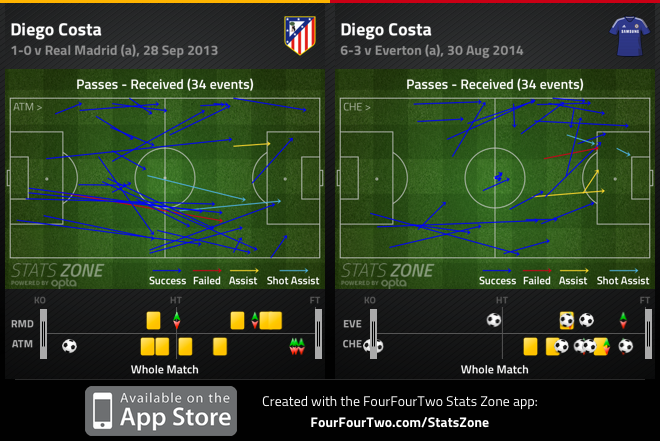
These patterns change in easier matches. When dominant Chelsea spend more time building their attacks; the wingers have time to push up and Costa gets more players to combine with. With the collective passing style shorter and of a higher volume, his movement becomes more intricate and varied. Especially against Swansea, the focus could be directed towards the final third.
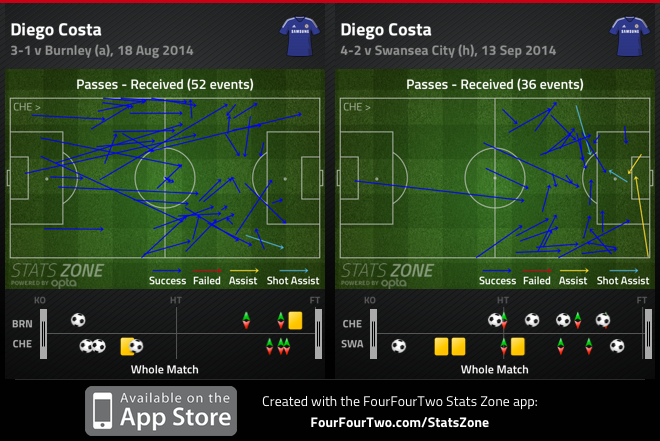
There is also a difference in his choices on the ball. In the narrow matches he acts as a targetman, collecting the ball and laying it off. This places little demand on his creative faculty, but is nonetheless crucial. Out of the 27 passes he attempted against Everton, only 5 were directed forward and 2 completed.
The story was different against Swansea. Costa had more time and space, with team-mates running beyond him. This led to more forward passes: he attempted 28, of which 10 were forward and 9 completed.
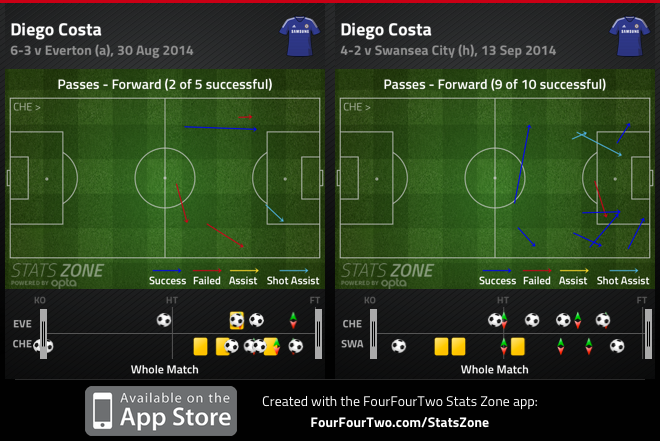
True grit
The mentality of Costa also varies depending on the opponent. When the chips are down, the fighter comes out. Against Everton, particularly in the first half, he chased defenders across the pitch and urged his team-mates to join him. From a defensive perspective he rolled up his sleeves, making 4 tackles, committing 2 fouls and producing 2 clearances inside his own box. The combative display was crowned with a trademark squabble with Seamus Coleman. Costa’s shift against Swansea was somewhat different.
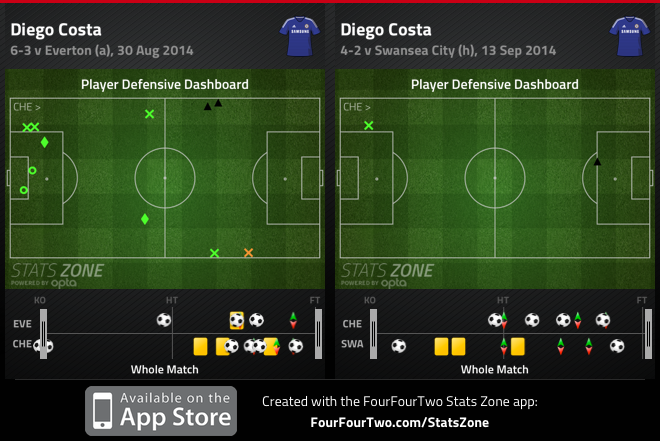
How many points Costa will win for Chelsea this season is impossible to say, but one thing seems certain: it will be many. While most observers expected him to be good, few had foreseen such a blistering start. His goalscoring ratio is almost impossible to maintain, but his role as the side’s focal point will remain all-important. The contrast to last season’s woes is almost comical, and rarely has a player solved a manager’s problem in such an emphatic manner. Mourinho was right. Some things are worth waiting for.
